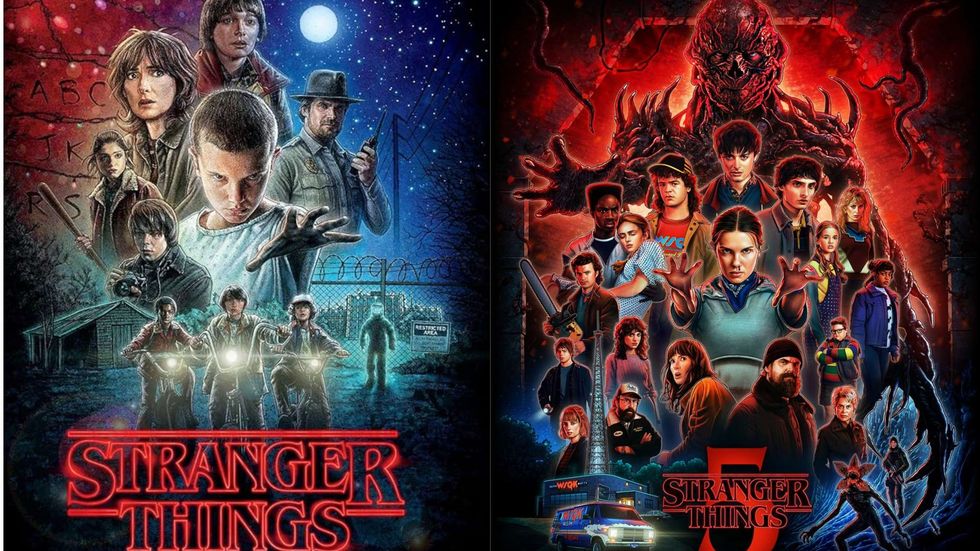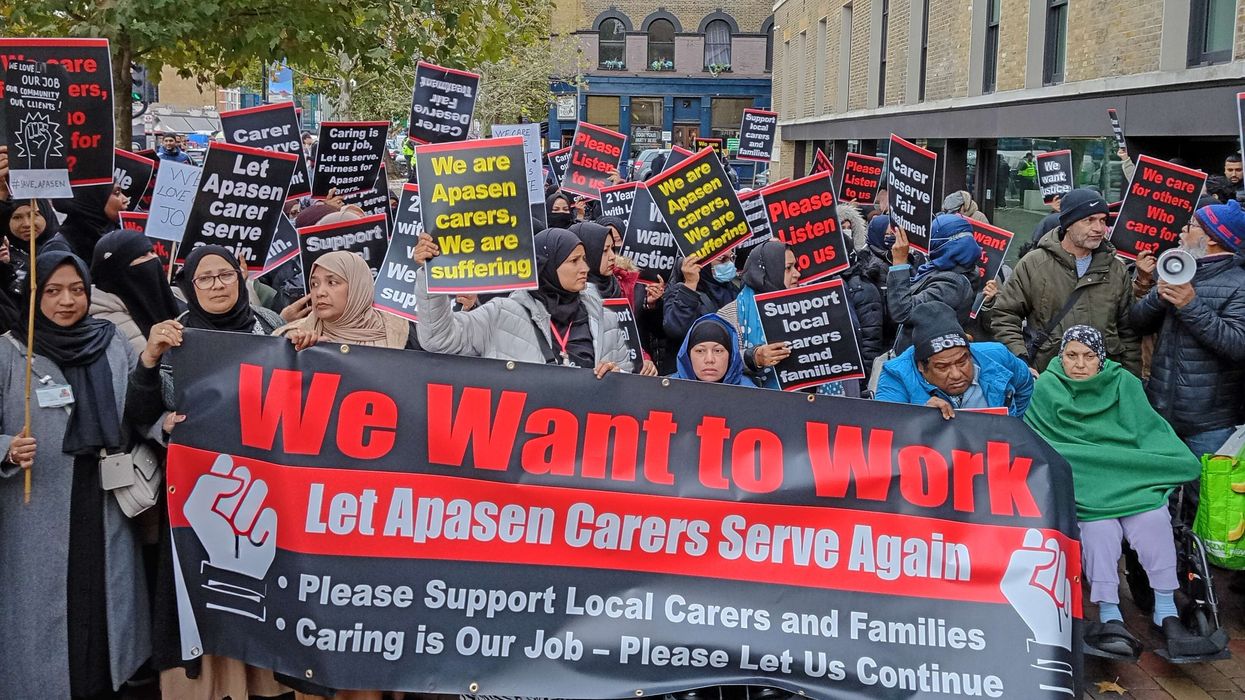Mohini Dey laughs down the line, a deep, unfiltered chuckle that cuts through the noise. “Ronnie Scott’s? With my band, playing my music? That’s crazy,” she says, still letting it sink in. Speaking exclusively to Eastern Eye from Los Angeles, where she recently wrapped a show at the Hollywood Bowl with Willow Smith, the 28-year-old bassist is now preparing for her first headline performance in the UK this July.
For Dey, who grew up riding Mumbai’s local trains with a Walkman and no room for childhood distractions, this moment feels both improbable and hard-earned. It’s the kind of full-circle milestone that doesn’t come from luck, but from surviving, insisting, and showing up anyway.
A childhood full of sounds and music
Mohini was never a regular child. Born into a musically disciplined home in Mumbai, her father a bassist, her mother a singer, Mohini’s life was all structure and sound. But not the kind most children grow up with. “I didn’t have friends my age,” she says plainly. “My dad was strict. He believed childhood was for building something, not wasting time.”
While most kids her age were at birthday parties, Mohini was at Nirvana Studio, jamming with jazz legends like Ranjit Barot and Louis Banks. “It was like going to two schools: one for academics, one for music history and reality checks,” she recalls. “I was surrounded by giants, and I learned early that to make it, I had to be exceptional.”
Mohini Dey will make her UK headline debut at London’s iconic Ronnie Scott’s Jazz Club this July Instagram/dey_bass
That early push turned her into a master of her craft but also left scars. “I was depressed as hell,” she admits. “I was constantly being moulded into someone else’s dream.”
At 17, she left it all and became the family’s breadwinner
At 17, she snapped. In a moment of quiet rebellion, she left home. Cut ties. Lived alone. And decided to prove, especially to her father, that she could make it on her own. “He told me I wouldn’t be successful without him,” she remembers. “I needed to show him he was wrong.”
Those three years were lonely, but transformative. Mohini toured, hustled, and became her family’s main earner. “I learned to navigate everything. The business side, the gigs and all of it,” she says.

When music became medicine
The silence with her father finally broke when he called her after three years. “He said he was proud. That was enough. He didn’t apologise, but he didn’t need to.” She began taking him to her shows. In the last two years before he passed away, Mohini made sure he saw what she’d become.
“I took him to my shows. Introduced him to the life I’d built. It was healing,” she says, voice softening. “His death hit hard... but also made me push even more,” she says. “The last two years before he passed… they were good. Really wholesome. I’m glad we had that.”
Her father’s death could have derailed her. Instead, she kept playing. “I got back on stage within days. Because music took care of me when I couldn’t take care of myself.”

Not just the bass girl
Mohini is now one of India’s most sought-after musicians, having worked with legends like A.R. Rahman, Clinton Cerejo, Zakir Hussain, Salim–Sulaiman, and even Willow Smith, with whom she just played the Hollywood Bowl.
She’s crossed genres with ease, from Carnatic to rock, from fusion to pop. Her only rule? Never stay comfortable. “I’ll do a metal tour one week, a classical show the next,” she grins. “If it feels too easy, I’m bored.”
But don’t mistake that hustle for perfectionism. “I’m burnt out,” she says without flinching. “I’ve been working nonstop, albums, tours, even managing a side business. Sometimes I just want to disappear into a cave with my bass.”
Still, when she plays, the burnout fades. “There are these rare moments when I’m on stage, not overthinking, just being. That’s what I chase.”

“I’m not a diversity hire. I’m just good”
Despite being a young Indian woman in an industry that rarely makes space for either, Mohini refuses to paint herself as a victim. “If anything, I used it to my advantage,” she says with a shrug. “I’m talented, I’m beautiful, I’m Indian. It made people take notice. But then I had to prove I deserved it.”
That confidence comes from lived experience. “I’ve never been treated like a diversity hire. I get called because I deliver. And because I’m versatile.” Her mentor, drummer Ranjit Barot, taught her early on: “You’re a musician first. The rest is noise.” That philosophy stuck.

Redefining success on her own terms
Despite the accolades, Forbes 30 Under 30, global acclaim, and sold-out venues, Mohini says awards never meant much to her. “In India, there are no awards for instrumentalists. Everything is for playback singers.”
So how does she define success? “I don’t know what it means yet,” she admits. “But contentment? That’s what I chase. Those rare moments when I play and I’m not overthinking, just flowing. That’s a win.”

What’s next: less travel, more life
As she readies her set for Ronnie Scott’s, including unreleased tracks and new sounds, Mohini is also thinking about slowing down. “I hate travelling,” she laughs. “By the time I’m 38, I want to be working from home, running a studio, picking only what excites me.”
She’s already laying the foundation with a social media company, side hustles and plans to support young musicians. “Music can’t feel like a grind,” she says. “It has to stay personal.”

Advice to dreamers: trust your gut
Asked what she’d tell her 14-year-old self, Mohini smiles. “Nothing. That kid was solid. She did what her dad told her to do. Then she did what she wanted to do. I’m proud of her.”
Her advice to young artists is blunt but inspiring: “People will try to drag you down. You’ve got to stay consistent, stay grounded, and own your story. Don’t wait for validation. Let your work speak. And if it doesn’t? Keep going until it does.”
From lonely train rides in Mumbai to sold-out shows at Ronnie Scott’s, from rejection and burnout to quiet moments of clarity on stage, Mohini Dey’s journey isn’t just about music, it’s about survival, rebellion, and learning to finally breathe in a life she built for herself.
And through it all, one truth remains: the bass didn’t just give her rhythm. It gave her voice.







 Stranger Things finale: the 10 big fan theories gaining real traction Instagram/@strangerthingstv
Stranger Things finale: the 10 big fan theories gaining real traction Instagram/@strangerthingstv 






